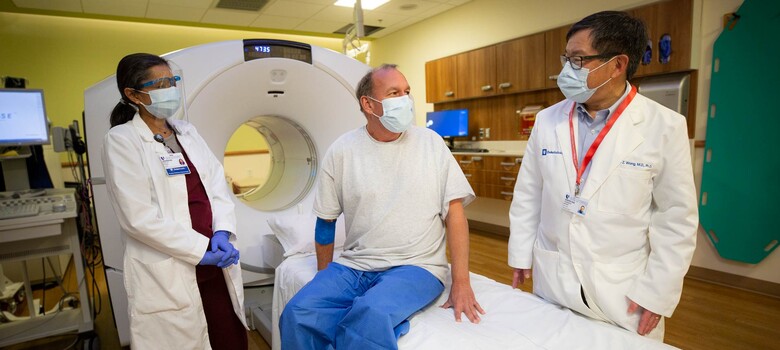Photon-Counting CT Scanner Helps Doctors See Clearly

A next-generation CT scanner at Duke Health provides patients with a life-saving technology not available in the past. One of only four available in North America, this photon-counting CT scanner is considered a milestone in medical imaging advancement. Not only does it produce significantly more detailed and specific images, it also exposes patients to a fraction of the radiation required for traditional CT scans.
Seeing the Difference
Traditional CT scanners use particles called photons to generate black-and-white, 3D images of structures inside the body. Unlike these scanners, the photon-counting CT scanner tracks -- or counts and categorizes -- photons individually based on their energy. The images, which are in color instead of black and white, make it easier to differentiate among various types of tissues, explained Ehsan Samei, PhD, chief physicist at Duke Health.
For instance, with conventional heart CT imaging, the iodine-based contrast used for the test can be hard to distinguish from calcium present in clogged arteries. Doctors may need to conduct a more invasive procedure, like a cardiac catherization, to make an accurate diagnosis. The new technology clearly differentiates between the contrast and the calcification. “We can see cardiac disease at a level of detail that we have never been able to see before,” said Dr. Samei.
High Resolution, Less Radiation
Another advantage of the photon-counting CT scanner is the crisp, high-resolution images it produces. Timothy Amrhein, MD, a neuroradiologist at Duke Health, has used the new technology to diagnose cerebrospinal fluid (CSF) leaks. Patients with this condition can experience symptoms ranging from debilitating headaches to memory loss. Many are bedridden. In the past, the condition was often misdiagnosed because it is hard to pinpoint on imaging tests. "The power of this new tool is that it can see smaller structures with finer detail,” said Dr. Amrhein. “Plus, it is more efficient. So you can use significantly less radiation to capture the images.”
Identifying Disease Stage
Unlike older CT technology, the photon-counting CT scanner does not just identify the presence of a disease. It can also determine its progress or stage. Dr. Samei explained that with lung diseases such as chronic obstructive pulmonary disease (COPD) or pneumonia related to COVID-19, “one of our challenges is to figure out the extent of the disease. It's not just whether you have it or not; the question is how bad is it?” According to Dr. Samei, doctors can now see the texture of the abnormality in much more detail. “Before, we could not quantify the state. But with this information, we can more precisely quantify the extent of the disease and design a more targeted treatment plan,” he said.
According to the FDA clearance announcement for the technology, the new photon-counting CT scanning technology represents the first major advance in CT imaging in nearly a decade. “You can think about it like going from black-and-white to high-definition color TV. It is that kind of transition,” said Dr. Samei.




